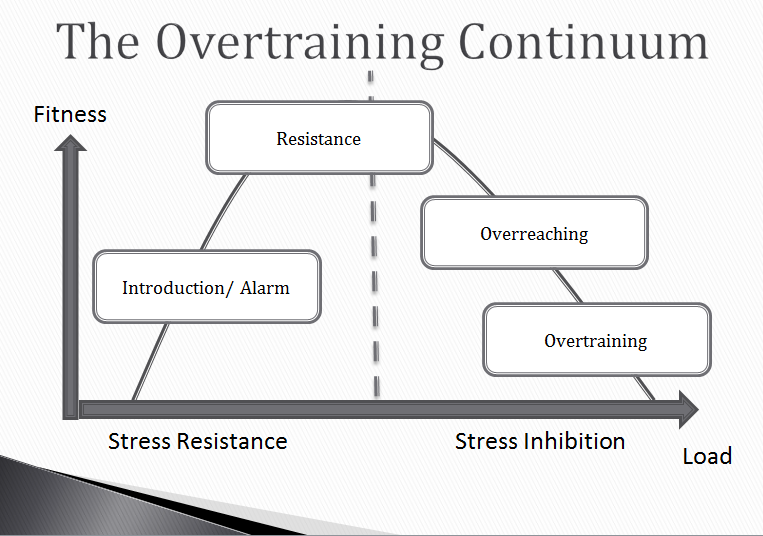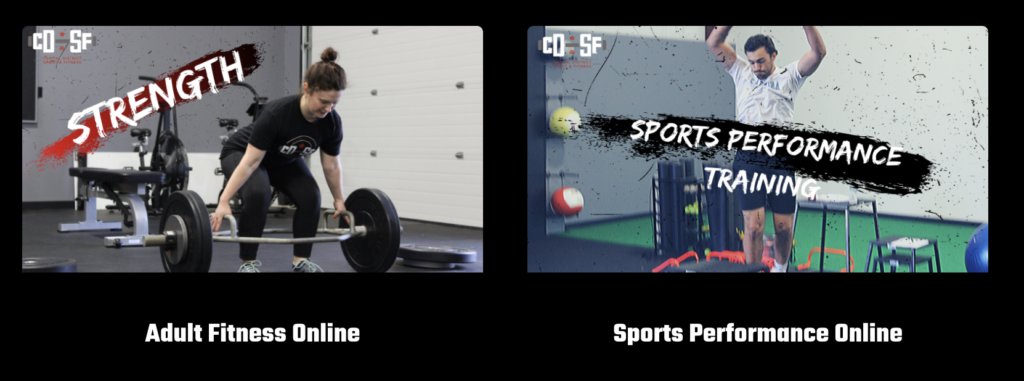The term “fatigue” often gets a bad rap. In sport you don’t want to be the one to fatigue first. You don’t want to be the athlete who fatigues easily. And you most certainly won’t be getting playing time late in the fourth quarter.
This article is here to show you the other side of fatigue and why from strength and conditioning coaches point of view we can use fatigue to help build you into the biggest, fastest, strongest athlete that you can imagine.
General Adaptation Syndrome
Back in 1936 Hans Seyle, an endocrinologist termed a model called the “General Adaptation Syndrome.” In short, this model can be explained in three stages:

Stage 1: Alarm Phase- In order for the body to make changes (getting stronger, losing fat, gaining muscle) you need to give it a new stimulus (new exercise routine).
Stage 2: Resistance Phase- While you’re being exposed to a new stimulus (working out) your body is working hard to get itself back to homeostasis and build itself up, so that when it’s exposed to that stimulus again it’ll be better prepared.
A good way to put this into perspective is to think of how sore you were after the first week of a new workout program and then by week 4 you were drastically less sore after completing the same workout.
Stage 3: Exhaustion Phase- When working out this is a stage you rarely want your body to be in. This is when the stressor has been applied for too long and your recovery efforts are no longer adequate enough to allow your body to return to homeostasis. You feel tired, lethargic, on edge, and may lose motivation to train.
Using Fatigue to Make Bigger Adaptations
The more advanced of a lifter or athlete you become that more you must use fatigue to get the results that you want.
If you’ve trained hard before whether you’re an endurance athlete or a powerlifter you’ll understand this feeling; it’s week six of an intense eight week training cycle. Training sessions are getting more challenging and your body doesn’t feel as fresh as it did during weeks one and two.
Should you stop training because your body doesn’t feel awesome?
No, you need to understand that you’re bringing your body through Seyle’s resistance phase and that you’re accumulating training stress or better put you’re accumulating fatigue. In the chart below during these last couple weeks of a training cycle you’d be close to where the dotted line is drawn through vertically on the curve. It is here, where you’re the furthest removed from homeostasis training with your biggest volumes, and having accumulated the most fatigue when your body has the potential to make the biggest adaptations.
Because when you allow your body to rest and recover after these intense periods of training you’ll be more prepared to handle more challenging workouts in the future.

Training under fatigue becomes acceptable when you no longer view fatigue as a single instance in time, but as a collection of all of the stressors your body has encountered during your training cycle. The fatigue you’re experiencing now will make you more resistant to these stressors in the future and thus a bigger, faster, stronger human being.
How to Determine If You’ve Fatigued Too Much
Here’s the catch. You can’t continually fatigue your body and expect to keep making progress and stay healthy.
Like we mentioned above, bringing your body deep into the resistance phase and training near your maximal recoverable volume is where you’ll make the biggest adaptations, but your body won’t make those adaptions until you’ve allowed it to recover from the fatigue that was accumulated.
So, how do you know when it’s time to rest and let the adaptions take place?
- Decreased motivation
- Mood Changes
- Irritability
- Frequent Injuries & Soreness
- Poor Sleep
- Loss of Appetite
- Lack of Enthusiasm
- Not Enjoying Activities You Once Enjoyed
Below are a few methods that we use to help ensure your body is getting proper recovery during the week/month/year.
- Planned Deload- A week or more of rest pre-built into your training program
- Data Tracking- Using resting heart rate, heart rate variability, and other measures to decide when you need to back off.
- Subjective Survey- Answering questions like how stressed are you? How much sleep did you get? How motivated are you to train? can help determine when you may need rest.
- Life Deload- Sometimes life happens and you take a break from training. Maybe you need to spend more time at work or go on vacation and have to take a break from training.
Fatigue isn’t always a bad thing. If you’re an advanced lifter or are attempting to peak for a competition your body needs to have experienced fatigue in order to perform at its highest level. Understanding this and knowing when it is time to rest and recover is key for continually making progress and staying healthy along the way.
Do You Want to Get Strong & Feel Your Best?
Check Out our Online Adult Fitness and Sports Performance Programs designed by our coaching staff using the same principles we use at our facility with our adult fitness clients and athletes.


